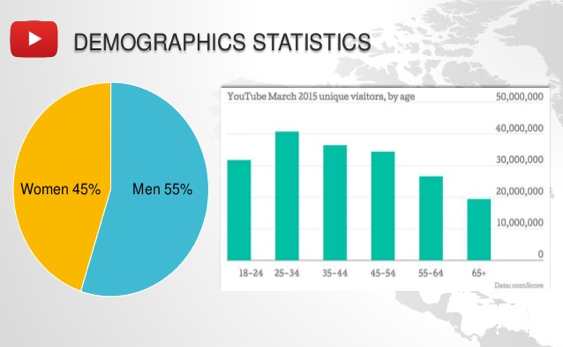e-Learning Ecologies MOOC’s Updates
Multimodal Learning: Visual Literacy
https://image.slidesharecdn.com/smd101youtube-161025094235/95/youtube-statistics-demographics-3-638.jpg?cb=1477388845
Images are an integral part of our society and sometimes a way to communicate thoughts and ideas that supersede mere words. Our visual literacy encompasses both our ability to interpret and evaluate visual information and our ability to communicate using images (Bristor and Drake, 1994). A visually literate individual can critically evaluate an image and draw from it the creators meaning, whether it is a photograph, painting, cartoon, or graph. To help illustrate this point, here is a short video that describes visual literacy and its role in the current digital culture
I was intrigued by the idea of how to teach visual literacy. This is not an unfamiliar topic to me as a Biology instructor, as we often use graphs, diagrams and models when explaining concepts. What I hadn’t spent a lot of time thinking about was the visual literacy of the students. I know that we spend time teaching students how to make graphs or diagrams but how much time do we spending teaching them how to read these. We ‘know’ that using visual images can help students to learn and recently an add came through my email for a program called “Draw it to know it”. I think this shows how important visual literacy is. So how do we teach it?
Tillman (2012) links the learning of visual literacy to Bloom’s taxonomy and outlines the how development of visual literacy can blend into other learning objectives. Tillman proposes that if you start by asking for learners to interpret a visual, predict what the ‘goal’ of the visual is, discuss how the visual conveys the message you can then eventually move on to having the learner create their own visual representation.
Current textbooks, whether traditional print or as e-texts continually add more and more visual content. In fact, many also incorporate videos and animations. As this seems to be a continuing trend it seems logical to begin to think about how we can enhance learner’s visual literacy and thereby potentially enhance learning overall.
Bristor, Valerie J., and Suzanne V. Drake. "Linking the language arts and content areas through visual technology." THE Journal (Technological Horizons In Education) 22.2 (1994): 74.
Tillmann, A. (2012). "What We See and Why It Matters: How Competency in Visual Literacy can Enhance Student Learning" Honors Projects. Paper 9. http://digitalcommons.iwu.edu/education_honproj/9



Your text about Visual Litteracy was very interesting to read. I must admit that this is something I did not have a lot of knowledge of. So it has really opened my eyes to the importence of competency in visual litterecy. From reading this I just remember something I heard someone saying once about modern math text-books compeared to older ones. Some teatchers argued that the new books was makeing it more confusing for students to understand because there was to much going on in the pages with different colores, pictures, cartoons and all sorts of distractions. I was a bit surpriesed at this statement and did not quite understand the consern. Even though I still do not want to go back to old fashioned books, I do understand that there was something in the coments that need to be paid attention to. Not just for better understand and learn math, but to understand the world around us. Thank you for your post.